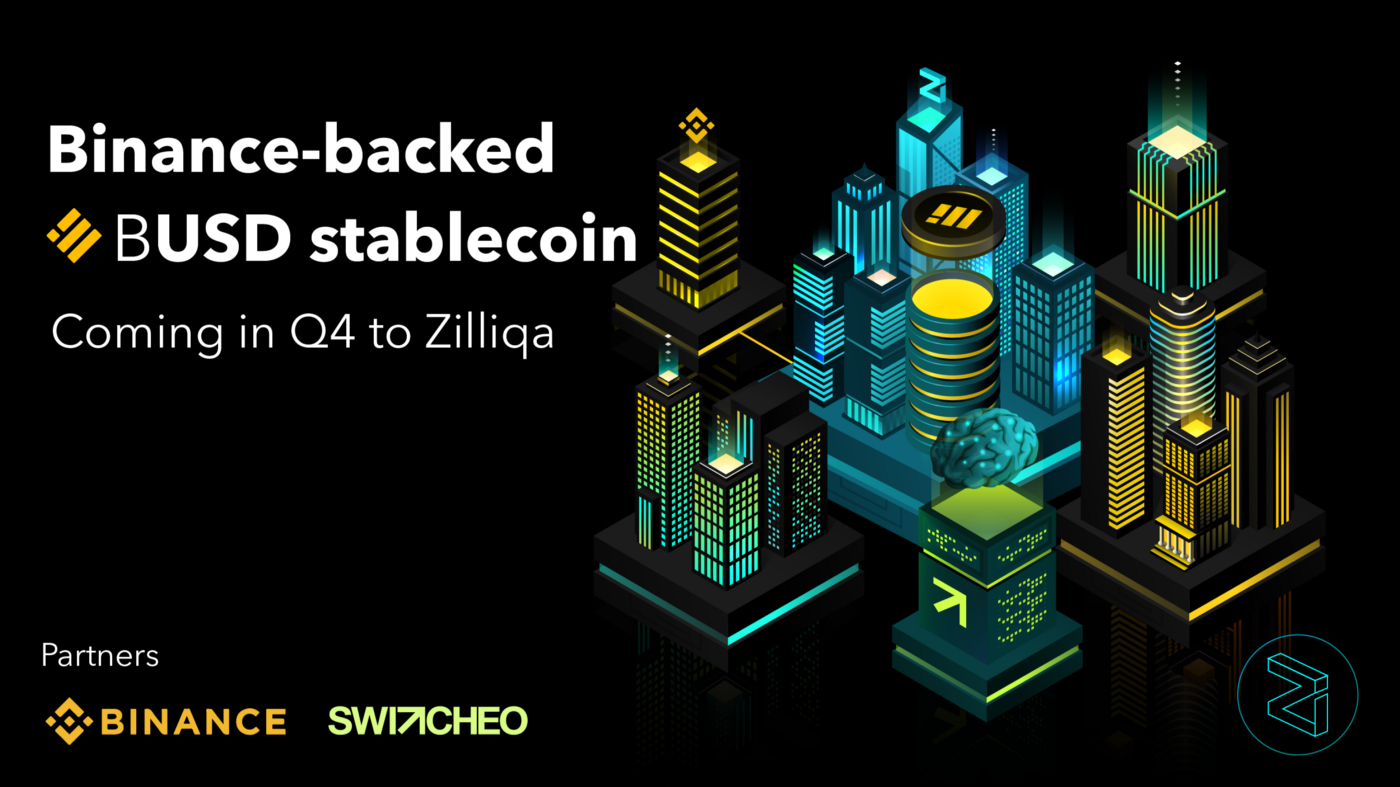Binance-backed BUSD to come to Zilliqa blockchain
Bringing BUSD to Zilliqa will involve building an interoperability bridge between Ethereum and the Zilliqa chain allowing ERC-20 tokens to be moved from one chain to another. This bridge will be built in collaboration with Switcheo.

Zilliqa and Switcheo to build a bridge between Ethereum and the Zilliqa chain to bring ERC20-BUSD stablecoin to Zilliqa and circulate as ZRC-2-BUSD!
Zilliqa is preparing to bring a USD-backed stablecoin ‘BUSD’ to its network for the very first time!
The Binance USD or ‘BUSD’ is a USD-pegged stablecoin created in partnership with Paxos Trust Company, a regulated financial institution that acts as the USD custodian and issuer of BUSD. BUSD is regulated by the New York State Department of Financial Services (NYDFS).
Bringing BUSD to Zilliqa will involve building an interoperability bridge between Ethereum and the Zilliqa chain allowing ERC-20 tokens to be moved from one chain to another. This bridge will be built in collaboration with Switcheo.
Parties involved
Various strategic players will be involved in bringing this project to life, each playing an important role:
- Paxos issues and mints ERC-20-BUSD (hereafter referred to as BUSD) stablecoins on Ethereum
- Binance provides a platform for its customers to deposit, withdraw and trade BUSD tokens
- Switcheo will be developing an interoperability bridge to connect Ethereum and the Zilliqa chain. This bridge will allow holders of BUSD to move their tokens from Ethereum to Zilliqa and vice versa
- As bridge operators, Zilliqa and Switcheo, will be forming an administrative consortium to manage all contracts enabling ZRC-2-BUSD (hereafter referred to as zBUSD)
Mechanics of the Bridge
The bridge will connect Ethereum and the Zilliqa chain in a bi-directional manner, i.e., tokens can move from either chain to the other. It will not just be limited to enabling BUSD functionality, but also extends to other ERC20-like tokens built on the Zilliqa and Ethereum blockchains.
The BUSD tokens once moved from the Ethereum chain will take the form of ZRC-2 tokens on Zilliqa. zBUSD token holders will benefit from the speed and low transaction fees on the Zilliqa chain. Holders will be able to move from one chain to another at any point of time.
The bridge will be enabled via two smart contracts sitting on Ethereum and Zilliqa chains. The first contract will be on Ethereum allowing BUSD holders to lock-up their tokens. Once the tokens are locked in the contract, an equivalent number of zBUSD tokens will be minted on the Zilliqa chain. To this end, a second contract implementing ZRC-2 standard will be deployed on Zilliqa. This contract will represent BUSD on the Zilliqa chain and will be managed and operated together by Zilliqa and Switcheo.
The minting of ZRC tokens will be fully automated. Once BUSD tokens have been locked in the first contract, new zBUSD tokens will be minted on the Zilliqa chain and assigned to the token holder. These zBUSD tokens can then be transferred around on the Zilliqa chain greatly benefiting from the throughput and low fees on Zilliqa. zBUSD tokens will be supported by several wallet providers within the Zilliqa ecosystem including ZilPay, Zillet, and Moonlet.
If zBUSD token holders wish to move back to the Ethereum chain, they simply have to burn their tokens on Zilliqa (in the second contract), which in turn will release their previously locked ERC-20 tokens in the first contract. Once tokens are unlocked, they can be transferred around on the Ethereum chain.
We fully expect this bridge to be operational within Q4 2020, following which developers can start building dapps using BUSD, which will give them access to both the Ethereum and Zilliqa chains.
Yet again — we’re delighted to be taking an active role in pushing the digital finance infrastructure to the next level by leveraging our smart contract capabilities. Enabling BUSD on the Zilliqa blockchain is another step forward in giving users greater choice across a range of regulated, stable and secure digital assets.
For further information, please visit:
